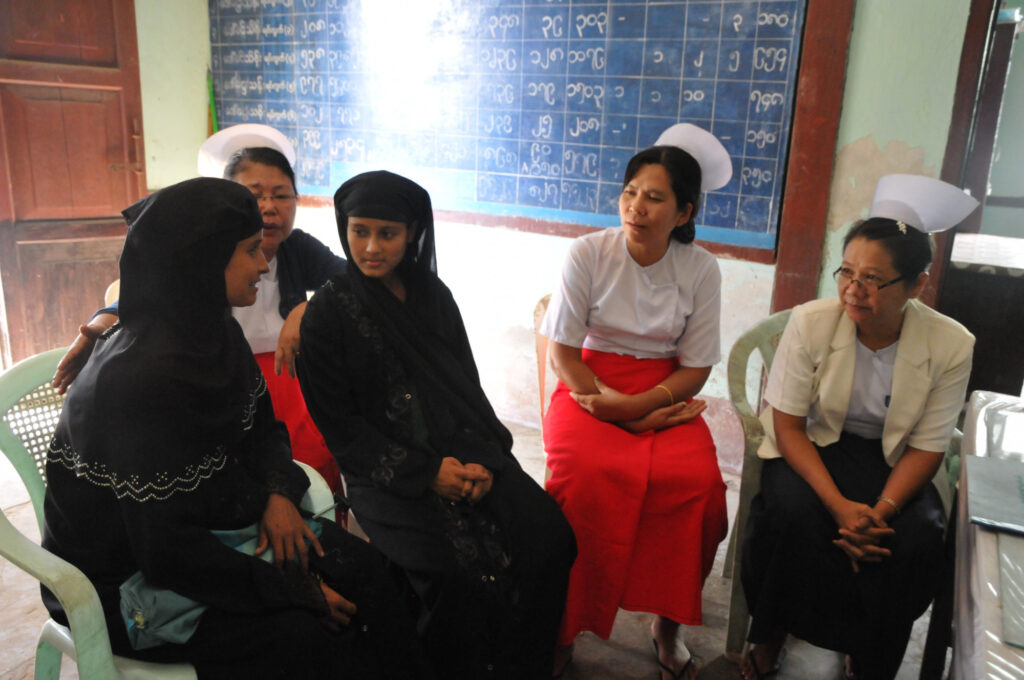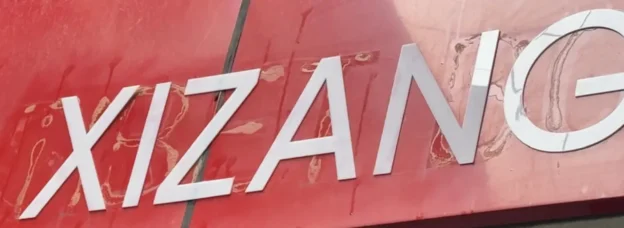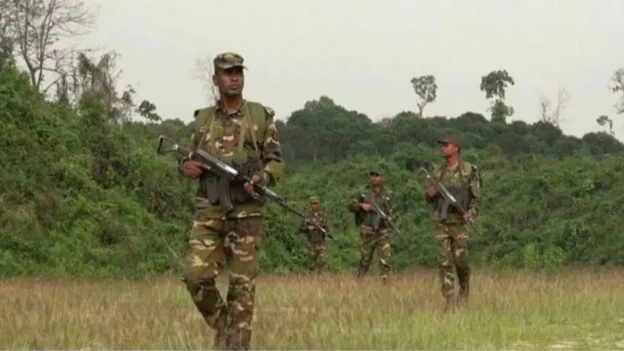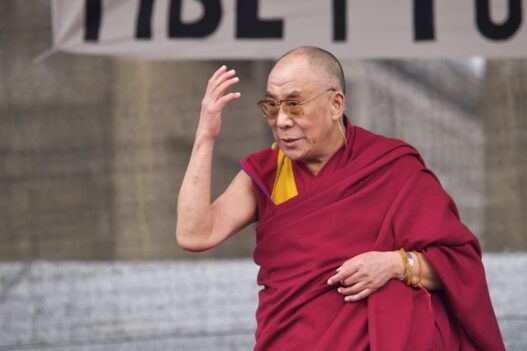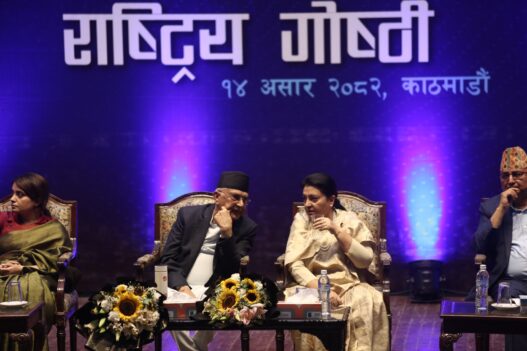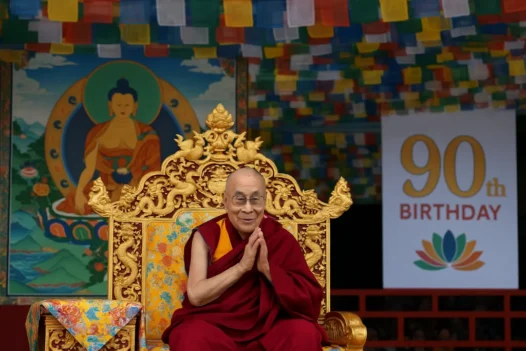A Myanmar Commentary by Kyaw Lynn
While conflict continues in Myanmar in the aftermath of the military coup, the political crisis in Rakhine State is often overlooked. Here the Rohingya emergency shows no sign of ending, but the growing strength of the United League of Army/Arakan Army is changing the landscape on the ground. In the aftermath of a ‘humanitarian’ ceasefire, Kyaw Lynn analyses political trends in this commentary, examining why the ULA/AA has become an influential actor in any likely resolution of the Rohingya crisis. Inter-community approaches and understandings will be key.
While the question of Rohingya repatriation remains under grave challenge, the movement and exodus of the Rohingya population from inside and outside of Arakan (Rakhine State) has lately been increasing. According to the October report of the Burma Human Rights Network, the number of Rohingya arrested for travelling without official permission during 2022 is 2,075, which is higher than the previous year. In recent weeks, it was also reported that around 250 Rohingya people on two boats attempting to approach Malaysia were trapped in the Malacca Straits due to engine failure. The reports said that there was another boat carrying around 180 people but still missing.
The implications are clear. For Rohingya people who seek to migrate to a foreign country the dangerous sea route has become a critical alternative because they are more likely to be arrested through land routes by car or train inside Myanmar. Meanwhile the process intended to protect the rights of the Rohingya people continues at the International Court of Justice (ICJ) in The Hague. But this is doing little to alleviate the situation of Rohingya communities inside Arakan or in the refugee camps in Bangladesh who find less hope for their future. International actions appear to be at an impasse.
As these crises continue, new questions have arisen during the past year in finding solutions to the Rohingya crisis with the emergence of a new actor, the United League of Arakan/Arakan Army (ULA/AA), in the politics of Arakan. This is especially the case in northern parts of Rakhine State bordering Bangladesh where the majority of the Rohingya population lives.
To put the situation in context: the ULA is the political wing of the Arakan Army, which was established in April 2009 under the leadership of Gen. Twan Mrat Naing in an area controlled by the Kachin Independence Organisation (KIO) along the China border. Since this time, the group has been consistently training and arming new members while joining the armed struggle with allied forces, notably the KIO, (Kokang) Myanmar National Democratic Alliance Army and Ta’ang National Liberation Army, against the Myanmar military, mostly in Kachin and northern Shan states. The group is also said to have a military base in territories controlled by the Karen National Union near the Thailand border, which is mainly used for logistics and new recruitment.
While the first arrival of AA soldiers into the Arakan battlefield is difficult to exactly date, many observers have noted that, since 2015, AA soldiers with arms and military equipment can be found in forest areas of Paletwa township, Chin State, and bordering areas with Bangladesh and India. Subsequently, intensive and more frequent clashes against the Myanmar military in Rakhine State began in mid-2018, reaching a peak in 2019 and ending in late 2020 with a ‘de facto’ or ‘informal’ ceasefire just after the 2020 general election. The ULA/AA had emerged as a major force, with consequences that are still developing.
This ‘first’ ULA/AA ceasefire brought new changes not just in Arakan politics but also to Myanmar as a whole. For nationwide politics, it means that the armed conflict between the Myanmar military and ethnic armed organisations is no longer confined to the China and Thailand borders. The ceasefire also demonstrated the de facto acceptance by Myanmar military leaders of the existence of the AA in Arakan, a position that they had previously rejected. Equally important, the truce caused a change in the gravity of the political centre from electoral political parties to armed groups, notably the ULA/AA, which controls executive functions and administers the judiciary in large swathes of territory in rural areas of the northern and central townships in Rakhine State.
The scale of this build-up, in turn, increased tensions with an older but small, and less popular, Rakhine armed group known as the ‘Arakan Liberation Party/Army’ (ALP/ALA). A signatory of the 2015 Nationwide Ceasefire Agreement, the ALP/ALA is mostly perceived as a force supporting the military State Administration Council (SAC) by both the ULA/AA leadership and the majority Rakhine population. In the past, there were attempts to merge the two movements together, but there have also been confrontations, including clashes on the Bangladesh and India borders. As a sign of the worsening situation, the ULA arrested at least ten ALP members during the past year, accusing them of collaborating with the SAC in surveillance activities and arresting civilians and ULA/AA members.
In the latest incident on the evening of 4 January, the ALP/ALA’s military chief and two junior colleagues were assassinated in a car in the state capital Sittwe. The ALP accused the ULA, charges which the ULA denied. Instead, the party spokesperson pointed to internal divisions within the ALP leadership or the possibility of political manipulation by a third party (possibly the SAC) which wanted to further complicate relations between them. To date, however, neither side has provided effective evidence to support their positions, while the SAC has remained surprisingly silent about these deaths.
As these events testify, Rakhine State today has ceasefires but it does not have peace. As in the rest of the country, new approaches are essential if lasting peace and justice are to be achieved.
The ‘de facto’ or ‘informal’ ceasefire
For the moment, the Sittwe assassinations are dominating the media headlines. But it has not detracted attention in Arakan from the ULA/AA’s emergence as a potential actor in solving the Rohingya crisis. In particular, a state-building and nation-building agenda, announced by the ULA Chairman Gen. Twan Mrat Naing in April 2021, raised questions about how the ULA leadership intend to handle the role of the Rohingya community in Rakhine State. This is a question that became ever more pertinent during the first 20 months of ‘informal’ ceasefire following its 2020 inception.
During this time, the ULA claimed to include the local Rohingya community in its military, judiciary and administrative sectors. The situation on the ground remained very difficult, exacerbated by the SAC coup in February 2021. But whether relations by the ULA towards the local Rohingya community were satisfying or not, some positive changes could be seen when it came to social cohesion and political inclusion with the ULA authorities in the field. This marked a new climate in inter-community affairs.
A more challenging phase, however, began when armed clashes broke out between the Myanmar military and AA near Rohingya villages in Maungdaw and Buthidaung townships between August and November 2022. Unlike previous rounds of conflict, the negative impact of the fighting visibly affected not just the local Rakhine population but also the Rohingya and other minority communities. Negative consequences ranged from the blockage of trade, travel and humanitarian assistance to the displacement of villagers, civilian casualties and human rights violations.
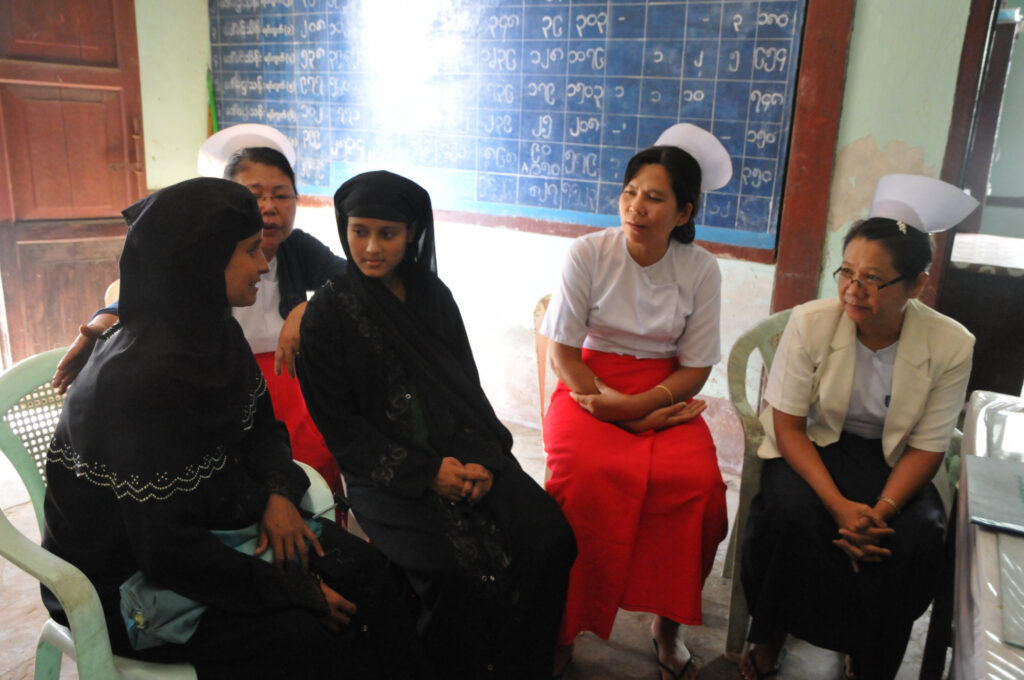
The ULA/AA was now visibly in the front-line of the Rohingya crisis in northern Rakhine State, a position that became even clearer when a new ‘humanitarian’ ceasefire was agreed with the SAC in late November. This resulted in affirming the AA’s ground control over many parts of Maungdaw and Buthidaung townships. In consequence, as 2023 begins, the ULA appears as one of the most responsible and visible stakeholders in any process of refugee repatriation from Bangladesh. Clearly, relations with the Rohingya community have approached a critical time. But the future path will not be easy, and there will be yet more complex scenarios ahead.
Engagement by the ULA towards the Rohingya issue
For the present, approaches by the ULA towards the Rohingya issue need to be analyzed based upon two key issues: its policy stand on the question of a repatriation process, and its governance policy toward the Rohingya community inside Arakan.
On 19 September 2022, for the first time since the 2017 ‘regional clearance’ operations by the Myanmar military against the Rohingya population in north Arakan, the ULA/AA spokesperson stated the movement’s position on refugee repatriation from Bangladesh:
“Some people consider the ULA has a responsibility for the resolution of the Rohingya crisis. If it is to be so, there shall be two things. First, the international community and Bangladesh should recognize the ULA/AA as the main stakeholder in the resolution of this crisis. Secondly, Bangladesh and other Great Powers, including the United Nations, should give full support and stand together with us.”
To date, there have been few visible responses from the Rohingya population or international community on the ULA’s position. But this policy statement can be seen as a more active move by the ULA leadership regarding refugee repatriation and resolution of the Rohingya crisis as a whole. In a highly difficult landscape, ULA leaders have always regarded the issue as a political suicide that could bring them into the ‘enemy’s trap’ – a reference to the political ‘divide-and-rule’ games played by the Myanmar military.
Indeed, after the ULA statement, there were rumours of political plots in Rakhine State by the SAC involved from behind. These included the secret distribution during the night of pamphlets in markets and houses in urban areas of Mrauk-U and Sittwe asking: “Why are there Bengali people in the AA if they march in line with the “Way of Rakhita?” and ‘Do you know that the AA is supported by the OIC and Muslim countries?’ At the same time, some pro-SAC media also started to raise provocative questions like ‘Why did the AA say to receive back Bengali refugees if they are really fighting for the Rakhine people?’
As history has shown, there are no easy answers for those seeking to accelerate the finding of just solutions. The Rohingya crisis has become a complex admixture of various components, including the protection of human rights, the rights to citizenship, international investigations by the ICJ and International Criminal Court, grievances over communal violence, competing historical narratives, and perceived threats of political extremism. The outcome is a highly polarized environment and different opinions among the various actors, including between the majority Rakhine population and the Western international community, which has empathetically stood on the side of the Rohingya community regarding the rights to citizenship and human rights issues for most of the time.
Despite these difficulties, it seems that the ULA leadership have decided they have to consider their stand on the two issues of repatriation and governance policy toward the Rohingya population as a matter of necessity rather than of choice. They cannot afford to disappoint the different sides if their key political destinations are to be achieved with tangible results. Currently, the ULA leadership appears to believe that building better relations with the remaining Rohingya population inside Arakan is fundamental and more pragmatic in showing their political will in inter-community relations not just to international observers but also to the rest of the Rohingya population outside of the state.
Promoting reconciliation among the members of various communities in Arakan, as well as inclusion of Rohingya communities within local administration, are clearly essential. In this regard, the ULA authorities have been conducting two critical ‘missions’ to support the involvement of the Rohingya community in the state.
The first mission is mainly implemented through the participation of various community members in the celebration of events like football matches, traditional wrestling ‘Krin’ festivals and music ‘live-show performances’ on culturally-important days in ULA-controlled rural areas. Rohingya community, religious, and youth leaders have been invited by ULA officials and media agencies allowed to publicize these gatherings with news and photos. Following a football event in January 2022 in Kyauktaw township, a Rohingya community leader said:
“I believe that the essence of the football match held by the ULA is to achieve social cohesion and community reconciliation among the diverse groups, and we were also allowed to discuss and participate in it from the beginning.”
Through these activities, it is safe to argue that social interaction between Rohingya and Rakhine communities in ULA-controlled rural areas is comparatively higher than that in SAC-controlled urban and suburban areas.
In the second mission to promote inter-community understanding, ULA governing bodies have included the local Rohingya population in various departments, including the military, police, administration, taxation and judiciary. In a well-publicized example, the ULA released a video in May 2020 in which a Rohingya soldier serving in the AA questioned some Rohingya locals in Buthidaung township regarding a criminal case in their own language. Similar confirmation can be found in the administrative sector in an interview with the Chairman of Minbya township Muslim Council who said:
“The local ULA officers recognize and respect our organization. When they make a decision, they first consult and negotiate with the village administrators, including us, and there is very little corruption. As the ULA governance came to exist in my area, there are fewer crimes like theft, murder, and criminal gang activities.”
Despite these developments, there are still open questions over the extent to which the ULA leadership tolerates inclusion of the Rohingya community in decision-making processes and political representation in the longer-term. In addition, there have been accusations against AA soldiers over human rights violations during the recent clashes with the Myanmar military in Maungdaw and Buthidaung townships. In some cases, the ULA authorities investigated the cases and imprisoned the perpetrators with what were considered to be appropriate punishments. But challenges remain, and different perceptions continue.
The ULA leadership and Rakhine community, for example, believe that conflict negatively impacts not only on the Rohingya but also Rakhine and other nationalities who are struggling for the sake of a better future for all people of Arakan. In contrast, a large segment of the Rohingya community might still consider their situation as between a rock and a hard place where they are still uncertain of gaining tangible benefits as political instability continues in the country.
For community understandings to develop in Arakan, it is thus necessary that this difference in views over the reasons and consequences for armed struggle are reconciled with the formation of shared communication platforms in the different layers of society. Despite the current ceasefire, there are no roadmaps to peace in the territory today.
The matrix of Arakan Politics
Despite coming from various ideologies, parties and personal backgrounds, almost all the key Rakhine political leaders and actors agree on one crucial opinion when it comes to the priorities in Arakan politics. That is, they believe that the first and most fundamental issue is the lack of political self-determination; the second is the question of the Rohingya crisis; and the third is the issue of foreign investments in Arakan, especially from China and India, including resource and revenue sharing. In their thoughts, achieving the first political demand is critical for the resolution of the second and third issues. Thus, in their perception, it is essential to approach challenges from this structural perspective to resolve the Rohingya crisis.
Moving forward from this viewpoint is difficult. In a more comprehensive framework in political conceptions, the Rohingya crisis can also be viewed as the negative consequence of having ill relations between three edges of a triangle: the Myanmar State, the Rakhine community and the Rohingya community in which they have very different perceptions. Although many observers analyze the root causes of the problem based on bilateral relations between the Rohingya community and Myanmar State (or ‘Burmese’ state/community in a broader sense), further factors include the hostile relations between the central state and Rakhine community as well as the ways in which the interests of the Rakhine and Rohingya communities have historically been marginalized or downplayed. Rakhine and Rohingya relations are of vital importance.
Against this backdrop, there are two key reasons why the different dimensions to these relationships must be addressed as part of any solution to the Rohingya crisis. First, any critical development on the Rohingya issue that fails to accommodate the differences in opinion and strategy between the Myanmar State and leading Rakhine political organizations, such as the ULA/AA, will not be sustainable or achievable. In the current political climate, both the SAC and rival National Unity Government represent substitutes for the Myanmar State and, in future politics, one might endure as the only political entity. But, unlike other parts of the country, even a de facto or de jure peace agreement between the Myanmar military and Arakan Army will not be sustainable if they have disagreements or a lack of understanding regarding resolution of the Rohingya crisis.
Equally important, inter-community relations must be addressed to bring lasting peace. This leads to the second reason for promoting reconciliation and shared objectives between the different communities. Although Rakhine and Rohingya populations presently seem to have more understanding and sympathy due to common sufferings (humanitarian crises and human rights violations) and a common enemy (Myanmar military), a shared vision regarding their respective places in future Arakan society is still needed. This situation is also analyzed in a recent report conducted by the Institute for Peace and Governance, an Arakan-based non-governmental organization.*
As experiences around the world have shown, community reconciliation in a divided land like Arakan is a long-term process. It cannot be accessed without ‘forgiveness’ regarding past crimes among members of the communities in the first place. And it is also a process that includes five key steps: developing a shared vision of an interdependent and fair society; acknowledging and dealing with the past; building positive relationships; facilitating significant cultural and attitudinal change; and, finally, enabling meaningful social, economic and political change.
For the moment, politics in Arakan have not reached such a stage. Currently, the state of reconciliation among the members of different communities varies on the basis of socio-economic interactions, political environment and existing relationships in a particular area. In general, inter-community interaction in central Arakan townships, such as Mrauk-U, Kyauktaw and Minbya, is comparatively higher than in the northernmost townships of Maungdaw and Buthidaung.
Promoting community reconciliation will therefore be essential for the smooth implementation of a refugee repatriation process, and the success of this process will be the measurement of the state of reconciliation between the two communities. Equally important, recent developments in Arakan demonstrate that the role of the ULA/AA, which has both competitive power relations with the Nay Pyi Taw government as well as authority and influence over the Rakhine population, will be critical in bringing productive changes in the resolution of the Rohingya crisis.
Conclusion
The Rohingya crisis remains challenging for all domestic and international actors, and there is no simple way of finding a magic solution. The political crisis in the country has deepened more and more since the February 2021 coup. The possibility of refugee repatriation from Bangladesh and the broader scope of resolving the Rohingya emergency are less hopeful. And the emergence of the ULA as a new actor in Arakan politics creates new questions about old problems in resolving the Rohingya crisis.
Presently, the role of the ULA in addressing the Rohingya crisis is becoming more visible. This is especially apparent after the second round of armed clashes between the Myanmar military and AA since the 2020 ceasefire recently ended, resulting in de facto control by the ULA/AA of territories along the border with Bangladesh and rural areas in Maungdaw and Buthidaung townships. These areas are inhabited by a majority of the Rohingya population and are the places where repatriated refugees are to be rehabilitated. Thus relations between the ULA authorities and Rohingya community will have impact not only on the lives of the local people but the wishes of the refugee population in Bangladesh.
In general, it can be summarized that there are two basic – and opposite – hypothetical viewpoints that can be taken regarding the emerging role of the ULA in addressing the Rohingya crisis. The first and more pessimistic position is that the appearance of the ULA/AA as a new actor in Arakan politics can be seen as an arming of Rakhine ethno-nationalism which is a challenge for the Rohingya people in Arakan and will only make the process of solving the crisis more complex. But the second and more optimistic view is that the emergence of the ULA as a more potent and visionary political actor – different from other Rakhine parties that seek to mobilize the people on the basis of ethno-nationalism to challenge the central government – will produce a more united landscape for all marginalized groups to work together. If this is the case, it is trusted that the new political dynamics will bring light for reconciliation between the different communities against common sufferings and the common enemy.
Important shifts in the Arakan landscape are currently underway. While challenges lie ahead in relations between the ULA and Rohingya population, there have been positive developments, especially in inter-community relations and political inclusion. For this reason, a balanced viewpoint should be taken regarding current ULA-Rohingya relations. It is still early to be too optimistic. But it is also too late to be a pessimist.
(This story was first published in the Transnational Insititute. It has been reproduced without modifications to the text or images with consent from the author and the publisher. The Transnational Institute publishes under a creative commons license (an Attribution-Noncommercial-No Derivative Works 3.0 licence) which supports Creative Commons, an open form of publishing that encourages sharing and redistribution of information whilst recognising each author’s creativity and production. More information here https://www.tni.org/en/copyright-creative-commons-licence )
Source: The Emergence of the ULA/AA and Question of the Rohingya Crisis

